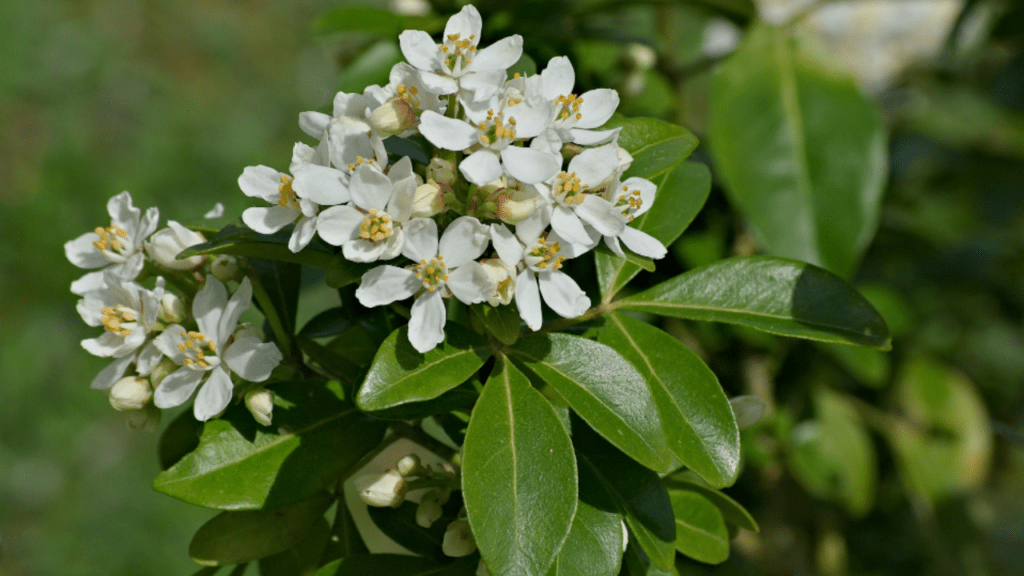
Choisya Ternata Care: Tips for Growing Mexican Orange Blossom
If you’re looking to enhance your garden or landscape with the beautiful Choisya Ternata, also known as Mexican Orange Blossom, then this post is for you. We’ll provide essential tips and advice for caring for this plant, including how to properly grow and maintain it to ensure its health and beauty in your outdoor space. Whether you’re a seasoned gardener or just starting out, these tips will help you successfully care for your Choisya Ternata.
Table of Contents
ToggleOverview of Choisya Ternata
Choisya Ternata, commonly known as Mexican Orange Blossom, is a beautiful and fragrant evergreen shrub that is native to Mexico. It is popular for its aromatic, glossy, and dark green leaves, as well as its clusters of white, star-shaped flowers that bloom in the spring and sometimes again in the summer. This shrub is a great addition to any garden or landscape, as it is relatively low maintenance and can thrive in a variety of growing conditions. Choisya Ternata is also known for its ability to attract bees and butterflies, making it a great choice for pollinator gardens. Overall, it is a versatile and visually appealing plant that can bring beauty and fragrance to any outdoor space.
Benefits of Growing Choisya Ternata (Mexican Orange Blossom)
Aesthetic Appeal in Gardens
Choisya Ternata, also known as Mexican Orange Blossom, is a beautiful and fragrant evergreen shrub that can add aesthetic appeal to any garden. With its glossy, dark green leaves and clusters of white, star-shaped flowers, it can bring beauty and fragrance to outdoor spaces. This shrub is popular for its low maintenance and ability to thrive in various growing conditions, making it a versatile and visually appealing addition to any garden or landscape. Additionally, Choisya Ternata is known for attracting bees and butterflies, making it a great choice for pollinator gardens. Whether you’re a seasoned gardener or just starting out, caring for and growing this plant can enhance the overall aesthetic of your outdoor space.
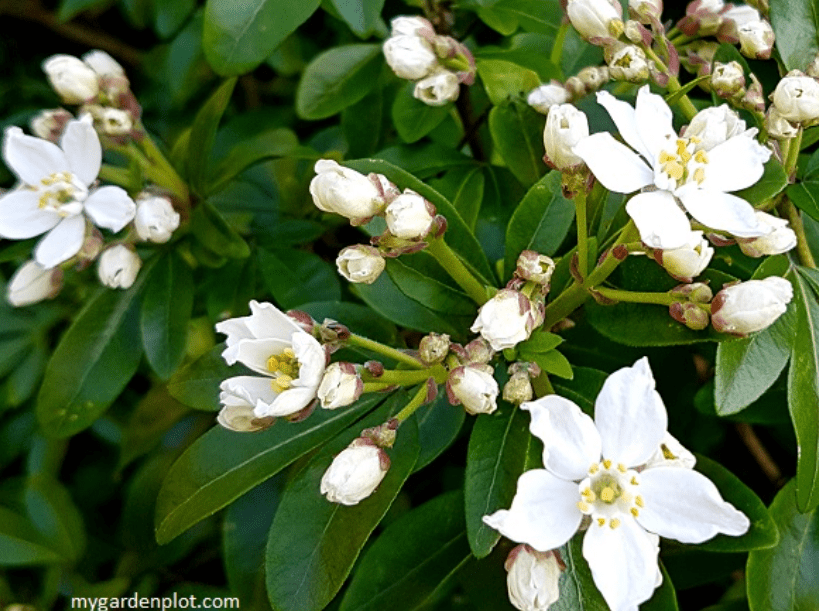
Fragrance and Attracting Pollinators
One of the benefits of growing Choisya Ternata, also known as Mexican Orange Blossom, is its ability to attract bees and butterflies. The fragrant white, star-shaped flowers of this shrub make it a great choice for pollinator gardens, as it can help support the local ecosystem and bring beauty to any outdoor space. Additionally, its glossy, dark green leaves and overall aesthetic appeal make it a versatile and visually appealing plant for any garden or landscape. Whether you’re an experienced gardener or just starting out, adding Choisya Ternata to your garden can enhance the overall look and fragrance of your outdoor space.
Year-Round Evergreen Foliage
Choisya Ternata, also known as Mexican Orange Blossom, is a popular shrub known for its year-round evergreen foliage. This means that it maintains its lush, green leaves throughout the year, adding a touch of color and vibrancy to any garden or landscape, even during the winter months. The evergreen nature of this shrub makes it a great choice for adding structure and visual interest to your outdoor space, regardless of the season. Whether you’re looking to create a formal garden or a more naturalistic landscape, the year-round evergreen foliage of Choisya Ternata can provide a beautiful backdrop for other plants and flowers in your garden. Additionally, the glossy, dark green leaves of this shrub can create a sense of lushness and vitality in your outdoor space, making it a visually appealing addition to any garden or landscape.
Ideal Growing Conditions for Choisya Ternata
Soil Requirements (type, pH, and drainage)
When it comes to growing Choisya Ternata, also known as Mexican Orange Blossom, it’s important to consider the soil requirements. This shrub thrives in well-draining soil with a slightly acidic to neutral pH. It’s important to ensure that the soil is not waterlogged, as Choisya Ternata does not tolerate wet feet. When planting this shrub, it’s important to choose a location with fertile, well-drained soil to ensure the best possible growth and health of the plant. Additionally, incorporating organic matter into the soil can help improve its texture and drainage, providing optimal conditions for Choisya Ternata to flourish in your garden or landscape.
Sunlight Preferences (full sun to partial shade)
When it comes to sunlight preferences, Choisya Ternata does well in a variety of lighting conditions. It thrives in full sun to partial shade, making it a versatile plant for different areas of your garden. In full sun, the shrub can produce an abundance of fragrant flowers, while in partial shade, it can still thrive and provide a beautiful backdrop for other plants in your garden. This adaptability makes Choisya Ternata a great choice for a range of garden settings. Whether you have a sunny, open garden or a more shaded area, this shrub can be a lovely addition to your landscape.
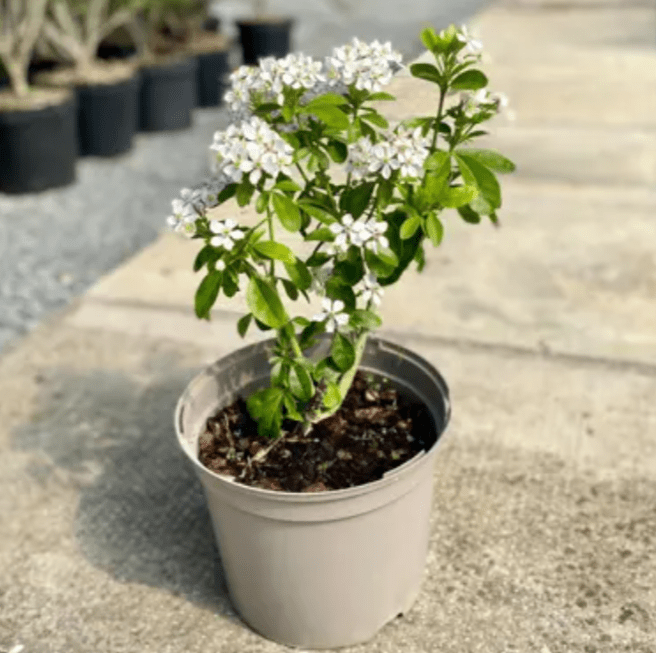
Watering Guidelines (how often and how much)
When it comes to watering Choisya Ternata, it’s important to keep the soil consistently moist but not waterlogged. During the growing season, which is typically spring and summer, you’ll want to water your shrub regularly, especially during dry spells. Aim to water deeply, ensuring that the root zone is thoroughly moistened. However, it’s important to avoid overwatering, which can lead to root rot and other issues. In the winter months, when the plant is dormant, you can reduce the frequency of watering, but still monitor the soil moisture to ensure it doesn’t dry out completely. Overall, the key is to maintain balanced soil moisture for the optimal health and growth of your Choisya Ternata plant.
How to Plant Choisya Ternata
Best Time to Plant (seasonal considerations)
Choisya Ternata can be planted at any time, but the best time to plant is in the spring or early fall. Planting during these seasons allows the shrub to establish its roots before the extreme temperatures of summer or winter. When planting, make sure to choose a location with well-draining soil and partial to full sun exposure. Dig a hole twice as wide and just as deep as the root ball, and gently loosen the roots before placing the shrub in the hole. Backfill with soil, water thoroughly, and add a layer of mulch to retain moisture and suppress weeds. It’s important to water the plant regularly after planting to help it establish and thrive in its new environment. By following these planting guidelines, you can ensure the successful growth of your Choisya Ternata shrub.
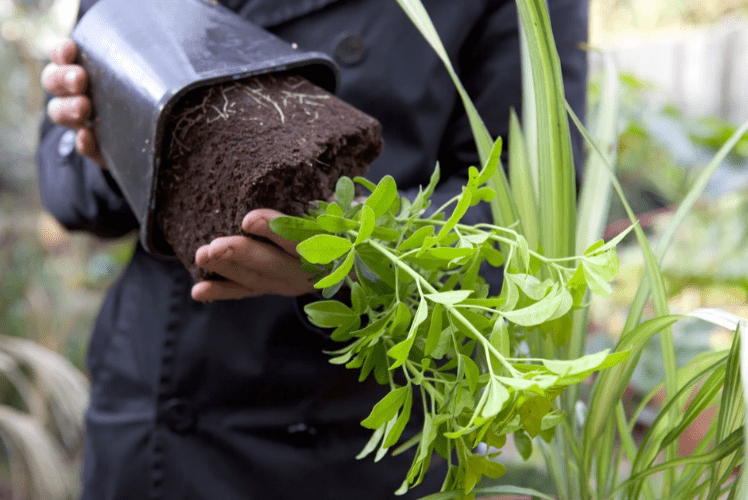
Planting Location and Soil Preparation
When planting Choisya Ternata, it’s important to consider the best time to plant and the location and soil preparation. The best time to plant this shrub is in the spring or early fall, as this allows the plant to establish its roots before extreme temperatures set in. Choose a location with well-draining soil and partial to full sun exposure for optimal growth. When preparing the soil, dig a hole twice as wide and just as deep as the root ball, and gently loosen the roots before planting. After placing the shrub in the hole, backfill with soil, water thoroughly, and add a layer of mulch to retain moisture and suppress weeds. It’s crucial to water the plant regularly after planting to help it establish and thrive in its new environment. By following these planting guidelines, you can ensure the successful growth of your Choisya Ternata shrub.
Step-by-Step Planting Instructions (in-ground and container planting)
When planting Choisya Ternata, it’s important to consider the best time to plant and the location and soil preparation. The best time to plant this shrub is in the spring or early fall, as this allows the plant to establish its roots before extreme temperatures set in. Choose a location with well-draining soil and partial to full sun exposure for optimal growth. When preparing the soil, dig a hole twice as wide and just as deep as the root ball, and gently loosen the roots before planting. After placing the shrub in the hole, backfill with soil, water thoroughly, and add a layer of mulch to retain moisture and suppress weeds. It’s crucial to water the plant regularly after planting to help it establish and thrive in its new environment. By following these planting guidelines, you can ensure the successful growth of your Choisya Ternata shrub.
Choisya Ternata Care: Essential Tips
Fertilizing Needs (types of fertilizers and application frequency)
When it comes to fertilizing Choisya Ternata, there are a few things to keep in mind. This shrub benefits from regular fertilization to support healthy growth and blooming. You can use a balanced, slow-release fertilizer specifically formulated for shrubs and trees. Apply the fertilizer in the spring, just as the plant begins to show new growth, and again in the fall to provide essential nutrients throughout the growing season. Be sure to follow the instructions on the fertilizer packaging for the proper application rates and methods. By providing the right type of fertilizer and applying it at the correct frequency, you can help your Choisya Ternata thrive and produce beautiful blooms.
Pruning and Shaping (when and how to prune for best results)
When it comes to pruning and shaping your Choisya Ternata shrub, it’s important to do so at the right time and in the right way to achieve the best results. Pruning should be done in the late spring or early summer, after the shrub has finished blooming. This will help to maintain its shape and promote new growth. When pruning, be sure to remove any dead or damaged branches, as well as any unwanted growth to keep the shrub looking neat and tidy. You can also shape the shrub by selectively pruning to encourage a more compact and uniform appearance. Be sure to use sharp, clean pruning tools and make clean cuts to avoid damaging the plant. By following these guidelines for pruning and shaping, you can help your Choisya Ternata shrub to stay healthy and attractive.
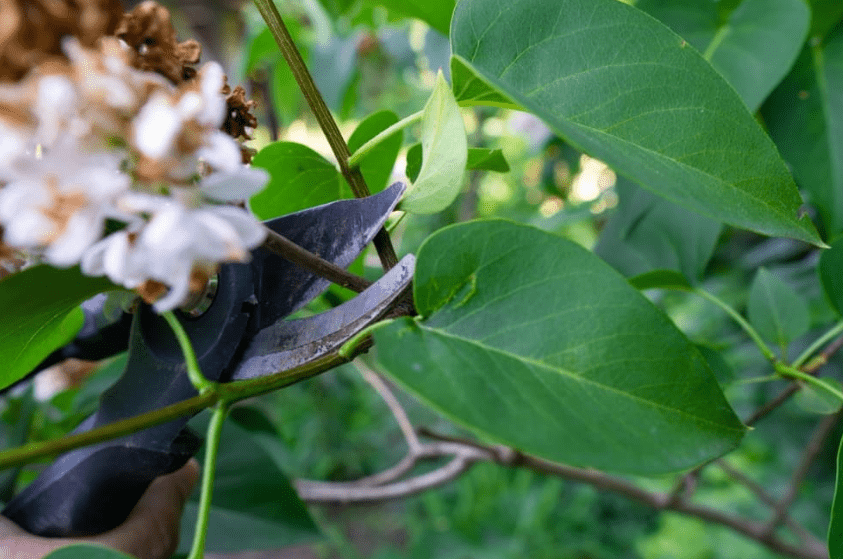
Managing Pests and Diseases (common issues and treatments)
When it comes to managing pests and diseases for your plants, it’s important to be proactive in preventing and treating any issues that may arise. Some common pests and diseases that can affect plants include aphids, spider mites, powdery mildew, and root rot. To prevent these problems, it’s important to regularly inspect your plants for any signs of infestation or disease and take action as soon as you notice any issues. This can include using insecticidal soaps or neem oil to control pests, and fungicides to treat diseases. Additionally, maintaining good soil drainage and proper watering practices can help prevent issues like root rot. It’s also important to remove any affected or diseased plant material to prevent the spread of pests and diseases to other plants. By staying vigilant and taking proactive measures, you can effectively manage pests and diseases to keep your plants healthy and thriving.
Propagation Techniques
Are important for expanding and maintaining your plant collection. There are several methods of plant propagation, including seed propagation, division, cutting, layering, and grafting. Each method has its own benefits and is suitable for different types of plants. Seed propagation is a simple and cost-effective method, but it can take longer to see results. Division involves separating a plant into smaller sections, each with its own roots and shoots, and is often used for perennials and grasses. Cutting involves taking a portion of a plant, such as a stem or leaf, and encouraging it to root and grow into a new plant. Layering involves bending a stem to the ground and covering it with soil to encourage roots to form. Grafting involves joining the tissues of two plants to create a new plant with the desirable traits of both. By mastering these propagation techniques, you can expand your plant collection and create new plants to share with friends and family.
Landscaping with Choisya Ternata
Is a great way to add beauty and fragrance to your outdoor space. This plant is known for its aromatic white flowers and glossy green leaves, making it a popular choice for gardens and landscapes. When landscaping with Choisya Ternata, it’s important to consider the plant’s growth habits and requirements. This plant thrives in well-drained soil and prefers full sun to partial shade. It is also important to consider the mature size of the plant and give it enough space to grow and spread. Choisya Ternata can be used as a focal point in a garden bed, as a hedge or border plant, or even in containers. With its versatility and beauty, Choisya Ternata is a great addition to any landscape.
Common Problems and Solutions
Yellowing or Browning Leaves
If you notice yellowing or browning leaves on your Choisya Ternata plant, it could be a sign of various issues. This could be caused by over or under-watering, nutrient deficiencies, pests, or diseases. To address this issue, make sure you are watering the plant appropriately and providing the right amount of sunlight. Consider using a balanced fertilizer to provide the necessary nutrients and inspect the plant for any signs of pests or diseases. Pruning any damaged or diseased leaves can also help improve the plant’s overall health. By addressing these issues, you can help your Choisya Ternata thrive and maintain its beauty in your landscape.
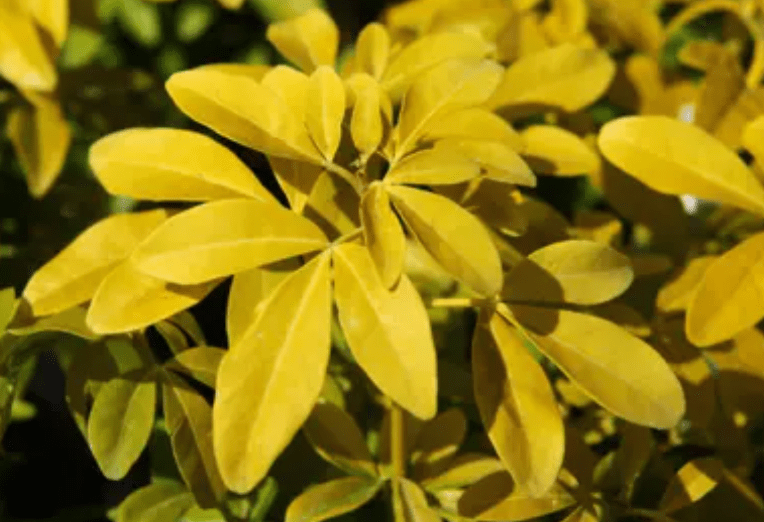
Poor Flowering
If you notice that your Choisya Ternata is not producing as many flowers as you would like, there are a few potential reasons for this. Poor flowering can be caused by insufficient sunlight, improper pruning, or nutrient deficiencies. To encourage better flowering, make sure your plant is receiving adequate sunlight and consider adding a balanced fertilizer to provide the necessary nutrients. Pruning the plant at the right time and in the right way can also help promote better flowering. Keep an eye on the health of the plant and make adjustments as needed to ensure it can produce beautiful flowers for your landscape. With proper care and attention, your Choisya Ternata can thrive and add beauty to your outdoor space.
Pest Infestations
can pose a threat to the health and beauty of your Choisya Ternata plant. Common pests that can affect this plant include aphids, scale insects, and mealybugs. These pests can cause damage to the foliage and affect the overall health of the plant. To address pest infestations, it’s important to regularly inspect your Choisya Ternata for any signs of pest activity. If you notice any pests, you can use insecticidal soap or neem oil to treat the infestation. It’s also important to remove any affected leaves or branches to prevent the spread of pests. Additionally, practicing good garden hygiene, such as removing fallen leaves and debris, can help reduce the risk of pest infestations. By addressing these issues, you can help your Choisya Ternata thrive and maintain its beauty in your landscape.
In conclusion, Choisya Ternata, or Mexican Orange Blossom, is a beautiful and versatile plant that can thrive in a variety of conditions. By following these care tips, you can ensure that your Choisya Ternata grows and flourishes in your garden or landscape. Remember to provide well-drained soil, regular watering, and occasional pruning to keep your plant healthy and vibrant. With the right care, your Mexican Orange Blossom can be a stunning addition to your outdoor space.
Frequently asked questions And Answer
Choisya Ternata, also known as Mexican Orange Blossom, thrives in full sun or partial shade. It is best to plant it in a location with well-draining soil.
Water your Choisya Ternata regularly, especially during the first year after planting. Once established, it is drought-tolerant and only needs occasional watering.
The best time to prune Choisya Ternata is after it blooms in the spring. You can trim it to shape and remove any dead or damaged branches.
Use a balanced fertilizer in the spring to promote healthy growth and blooming. Follow the instructions on the fertilizer packaging for the best results.
Choisya Ternata is hardy and can tolerate cold temperatures, but it is best to protect it from harsh frost by covering it with a frost cloth or mulch during the winter.
Choisya Ternata can grow up to 6-8 feet tall and wide, so make sure to give it enough space to spread out in your garden.
Yes, the fragrant flowers of Choisya Ternata attract bees and butterflies, making it a great addition to a pollinator-friendly garden.
Yes, Choisya Ternata can be grown in a container as long as it has good drainage. Choose a larger container to allow the plant to grow and thrive.
